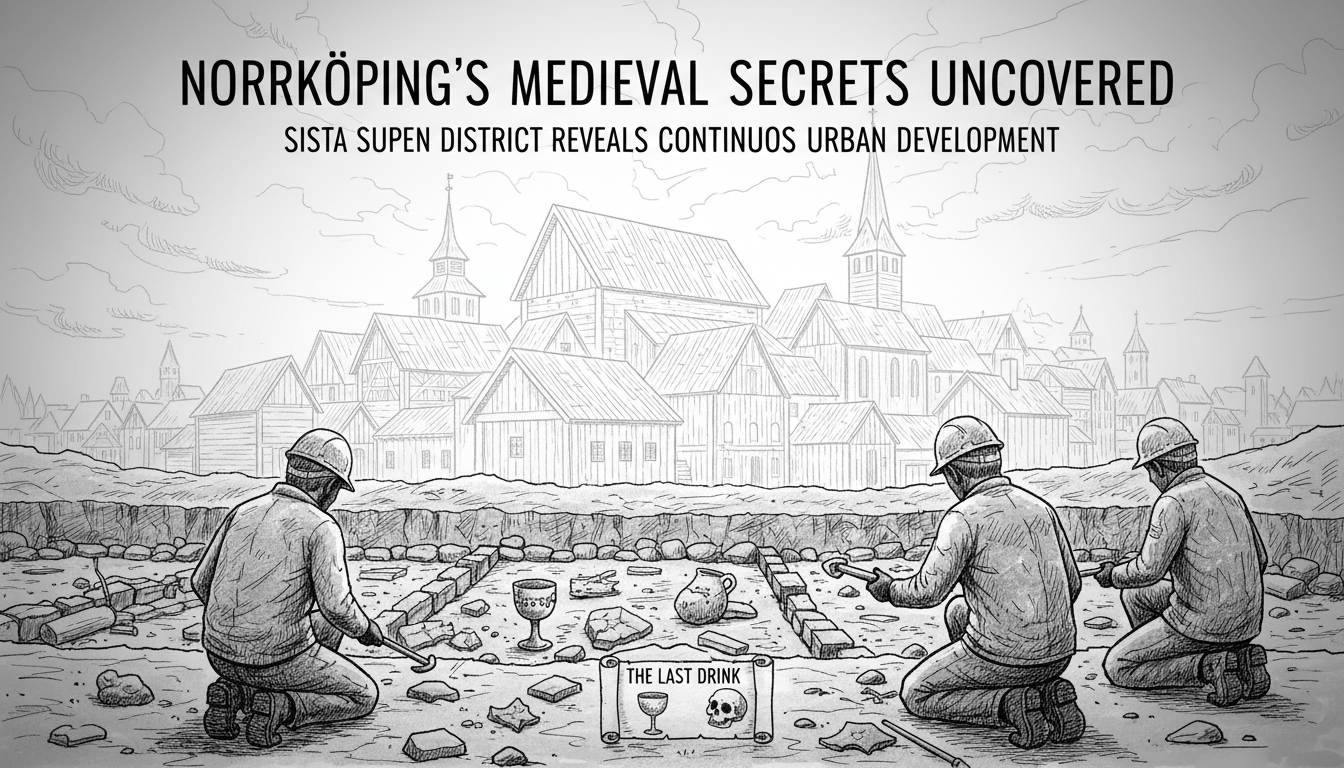Archaeologists have uncovered urban remains dating from the late medieval period in Norrköping, Sweden. The discoveries come from the city's Sista supen district, which translates to 'The Last Drink' in English. Project leader Fredric Wirbrand confirmed the findings in a recent statement. He said the team found evidence of continuous urban development from the late Middle Ages onward.
The neighborhood sits in Norrköping's Nordantill district. It earned its dramatic name from local folklore. According to tradition, condemned prisoners would stop at a small house on Västgötegatan Street for a final drink. This would be their last refreshment before execution at Galgberget, located one kilometer to the south. The original building dates back to approximately 1760.
This area originally carried the name Trehörningen, meaning 'The Triangle.' Authorities changed it to Sista supen in 2013 to reflect the neighborhood's unique history. The name change honored the centuries-old local legend that had defined the area's identity.
These archaeological discoveries provide tangible evidence of Norrköping's development from a medieval settlement to a modern city. The findings help historians understand how Swedish urban centers evolved over centuries. They show continuous habitation and development patterns that characterize many historic Nordic cities.
For international readers, Norrköping represents a classic example of Swedish urban preservation. The city maintains its historical character while accommodating modern development. This balance between preservation and progress defines many Swedish municipalities. The archaeological work demonstrates how cities can respect their past while building for the future.
The timing of these discoveries coincides with growing interest in Sweden's medieval history. Both tourists and researchers increasingly seek authentic historical experiences. These findings will likely boost Norrköping's cultural tourism appeal. They provide another layer to the city's already rich industrial heritage.
What do these discoveries mean for understanding Swedish urban history? They confirm that Norrköping maintained important urban functions throughout the medieval period. The findings suggest continuous settlement patterns that challenge some historical assumptions about regional development. They also demonstrate how local legends often contain kernels of historical truth.
The archaeological team will continue analyzing their findings. They hope to learn more about daily life in medieval Norrköping. Future research may reveal details about trade, craftsmanship, and social organization during this formative period in Swedish history.

